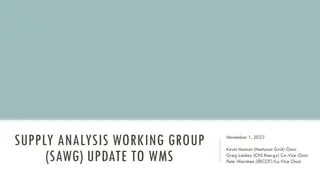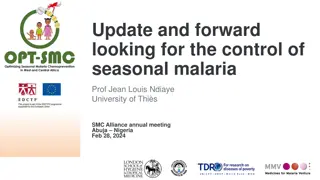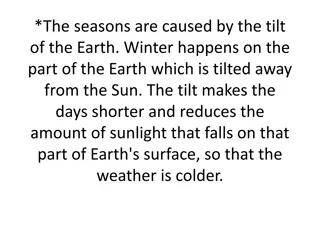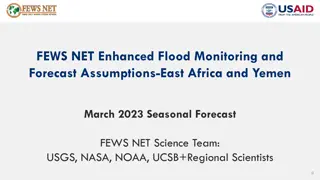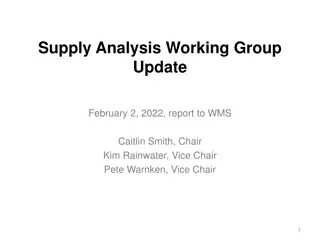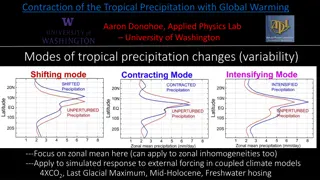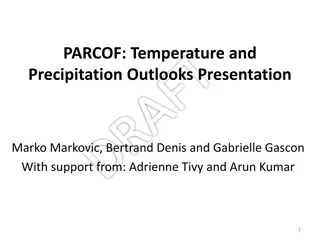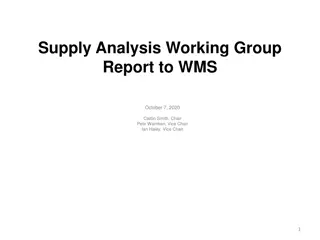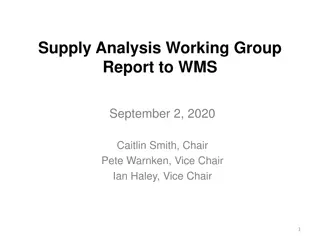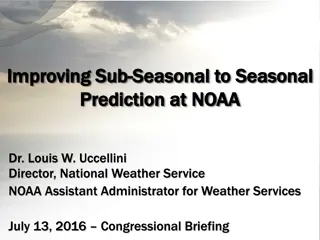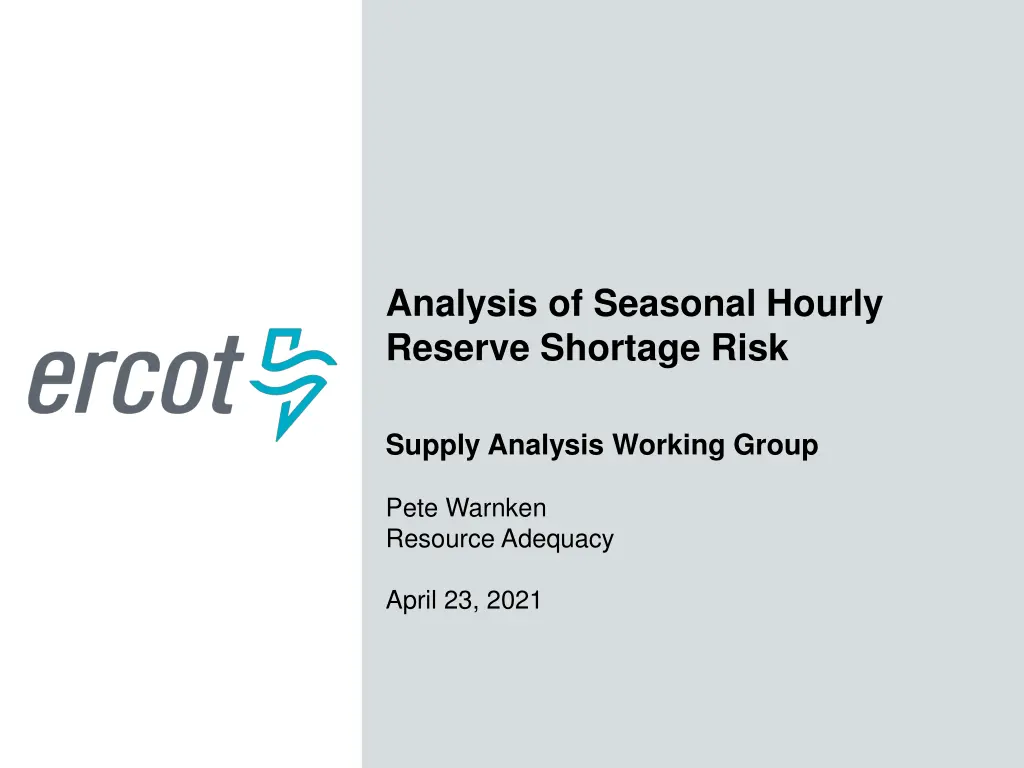
Seasonal Hourly Reserve Shortage Risk Analysis
Explore the analysis of seasonal hourly reserve shortage risk with a focus on Physical Responsive Capability (PRC) and risk levels for different seasons. Understand the methodology and hourly risk levels to assess supply adequacy.
Download Presentation

Please find below an Image/Link to download the presentation.
The content on the website is provided AS IS for your information and personal use only. It may not be sold, licensed, or shared on other websites without obtaining consent from the author. If you encounter any issues during the download, it is possible that the publisher has removed the file from their server.
You are allowed to download the files provided on this website for personal or commercial use, subject to the condition that they are used lawfully. All files are the property of their respective owners.
The content on the website is provided AS IS for your information and personal use only. It may not be sold, licensed, or shared on other websites without obtaining consent from the author.
E N D
Presentation Transcript
Analysis of Seasonal Hourly Reserve Shortage Risk Supply Analysis Working Group Pete Warnken Resource Adequacy April 23, 2021
Analysis Methodology Risk metric: minimum 5-min. Physical Responsive Capability (PRC) that occurs in each hour Evaluation scope: individual seasons and combined Historical period evaluated: summer - prior two seasons; spring - prior two seasons and partial current season; winter - prior three seasons; fall - prior two seasons Determine frequency and probability of low, medium, and high PRC risk hours Hourly Risk Levels: Low: PRC > 3,000 MW Moderate: 2,300 MW < PRC 3,000 MW High: PRC 2,300 MW 2 PUBLIC
Hourly Minimum PRC Risk Analysis - Summer Risk Levels Low: PRC > 3,000 MW (not shown in chart) Moderate: 2,300 MW < PRC 3,000 MW High: PRC 2,300 MW 3 PUBLIC
Hourly Minimum PRC Risk Analysis - Summer Risk Levels Low: PRC > 3,000 MW (not shown in chart) Moderate: 2,300 MW < PRC 3,000 MW High: PRC 2,300 MW 4 PUBLIC
Hourly Minimum PRC Risk Analysis - Summer Hour Ending Probability of Moderate Risk Probability of High Risk 1 2 3 4 5 6 7 8 9 0.0% 0.0% 0.0% 0.0% 0.0% 0.0% 0.0% 0.0% 0.0% 0.0% 0.0% 0.4% 2.9% 6.1% 19.3% 25.0% 22.5% 15.2% 7.8% 7.8% 5.3% 2.9% 0.4% 0.0% 0.0% 0.0% 0.0% 0.0% 0.0% 0.0% 0.0% 0.0% 0.0% 0.0% 0.0% 0.0% 0.0% 0.0% 0.0% 0.8% 0.0% 0.0% 0.0% 0.0% 0.0% 0.0% 0.0% 0.0% 10 11 12 13 14 15 16 17 18 19 20 21 22 23 24 Risk Levels Low: PRC > 3,000 MW (not shown in chart) Moderate: 2,300 MW < PRC 3,000 MW High: PRC 2,300 MW 5 PUBLIC
Hourly Average PRC Risk Analysis - Summer Risk Levels Low: PRC > 3,000 MW (not shown in chart) Moderate: 2,300 MW < PRC 3,000 MW High: PRC 2,300 MW 6 PUBLIC
Hourly Minimum PRC Risk Analysis - Spring Risk Levels Low: PRC > 3,000 MW (not shown in chart) Moderate: 2,300 MW < PRC 3,000 MW High: PRC 2,300 MW 7 PUBLIC
Hourly Minimum PRC Risk Analysis - Spring Risk Levels Low: PRC > 3,000 MW (not shown in chart) Moderate: 2,300 MW < PRC 3,000 MW High: PRC 2,300 MW 8 PUBLIC
Hourly Minimum PRC Risk Analysis - Spring Risk Levels Low: PRC > 3,000 MW (not shown in chart) Moderate: 2,300 MW < PRC 3,000 MW High: PRC 2,300 MW 9 PUBLIC
Hourly Minimum PRC Risk Analysis - Spring Probability of Moderate Risk Hour Ending 1 2 3 4 5 6 7 8 9 0.0% 0.0% 0.0% 0.0% 0.0% 0.0% 0.0% 0.0% 0.0% 0.0% 0.5% 0.0% 0.0% 0.0% 1.1% 1.6% 2.7% 1.6% 0.5% 0.5% 1.1% 1.1% 0.0% 0.0% 10 11 12 13 14 15 16 17 18 19 20 21 22 23 24 Risk Levels Low: PRC > 3,000 MW (not shown in chart) Moderate: 2,300 MW < PRC 3,000 MW High: PRC 2,300 MW 10 PUBLIC
Hourly Minimum PRC Risk Analysis - Spring Hour Ending Probability of Moderate Risk 1 2 3 4 5 6 7 8 9 0.0% 0.0% 0.0% 0.0% 0.0% 0.0% 0.0% 0.0% 0.0% 0.0% 0.4% 0.0% 0.0% 0.0% 0.8% 1.2% 2.5% 1.6% 0.8% 0.8% 1.2% 0.8% 0.0% 0.0% 10 11 12 13 14 15 16 17 18 19 20 21 22 23 24 Risk Levels Low: PRC > 3,000 MW (not shown in chart) Moderate: 2,300 MW < PRC 3,000 MW High: PRC 2,300 MW 11 PUBLIC
Hourly Minimum PRC Risk Analysis - Winter Risk Levels Low: PRC > 3,000 MW (not shown in chart) Moderate: 2,300 MW < PRC 3,000 MW High: PRC 2,300 MW 12 PUBLIC
Hourly Minimum PRC Risk Analysis - Winter Risk Levels Low: PRC > 3,000 MW (not shown in chart) Moderate: 2,300 MW < PRC 3,000 MW High: PRC 2,300 MW 13 PUBLIC
Hourly Minimum PRC Risk Analysis - Winter Risk Levels Low: PRC > 3,000 MW (not shown in chart) Moderate: 2,300 MW < PRC 3,000 MW High: PRC 2,300 MW 14 PUBLIC
Hourly Minimum PRC Risk Analysis - Winter Risk Levels Low: PRC > 3,000 MW (not shown in chart) Moderate: 2,300 MW < PRC 3,000 MW High: PRC 2,300 MW 15 PUBLIC
Hourly Minimum PRC Risk Analysis - Winter Probability of Moderate Risk Hour Ending 1 2 3 4 5 6 7 8 9 0.0% 0.0% 0.0% 0.0% 0.0% 0.0% 0.0% 0.0% 0.4% 0.0% 0.8% 0.0% 0.0% 0.0% 0.0% 0.0% 0.0% 0.0% 0.0% 0.0% 0.0% 0.0% 0.0% 0.0% 10 11 12 13 14 15 16 17 18 19 20 21 22 23 24 Risk Levels Low: PRC > 3,000 MW Moderate: 2,300 MW < PRC 3,000 MW High: PRC 2,300 MW 16 PUBLIC
Findings Summer: Range of highest-risk hours for insufficient operating reserves is HE 1500 1800; clear delineation relative to neighboring hours Highest-risk hour for the last two summers was HE 1600 (summer peak load hour was HE 1700 for both 2019 and 2020) The SERVM Monte Carlo simulation for Summer 2021 indicates the highest-risk hour is shifting back to HE 1700 due to late afternoon ramping down of increasing amounts of solar capacity Spring: As expected, significantly lower risk than for the summer, but multiple moderate-risk hours have been typical Relative to summer, the range of hours with moderate risk is broader; there is no common pattern to the risk-level frequencies from one year to the next, but combining the years indicates that HE 1700 stands out as the most common moderate-risk hour 17 PUBLIC
Findings Winter: Prior to the winter storm event, frequency of moderate-risk hours is sparse, occurring just once per season, and during late mornings Frequency analysis lends credence to the need to use a deterministic scenario approach for risk assessment of severe winter storm events Fall: No moderate- or high-risk hours observed for the last few fall seasons Similar to winter in terms of the PRC risk profile; risk assessment should also entail use of deterministic scenarios due to the lack of high-impact, low-probability events 18 PUBLIC

